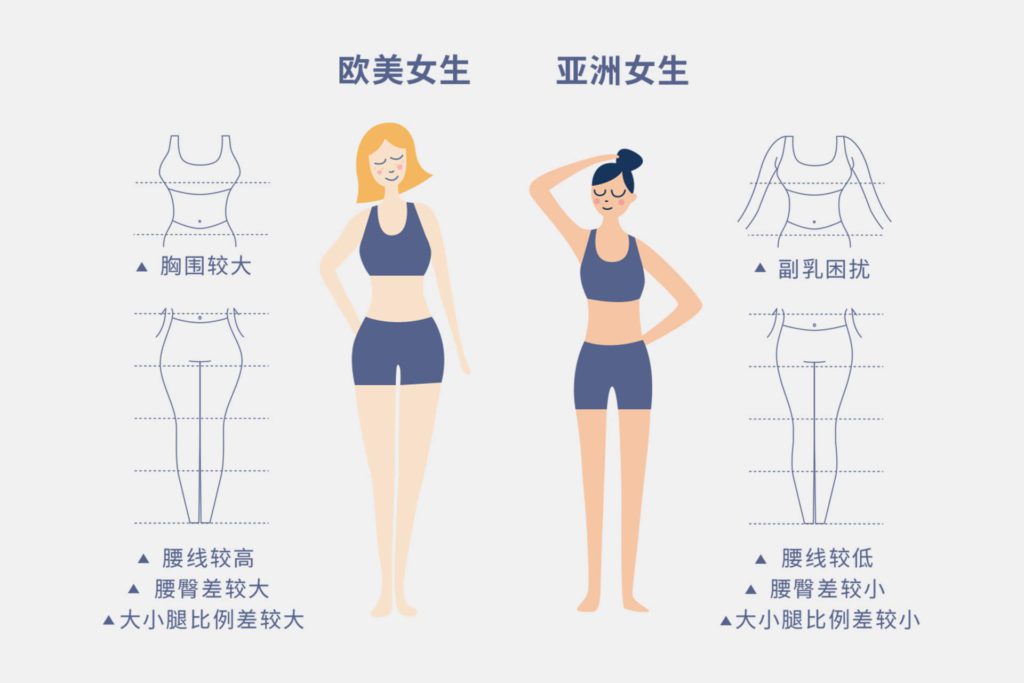On September 16, Anta Sports, a Chinese multinational corporation specializing in sports apparel and equipment, announced its acquisition of Maia Active, a Chinese female-focused sportswear brand. According to the announcement, Anta, headquartered in Jinjiang, Fujian, entered into multiple purchase agreements with various shareholders of Maia Active through a wholly-owned subsidiary. The deal involved acquiring 75.13% of Maia Active’s equity, and upon completion, Maia Active would become an indirectly owned subsidiary of Anta Sports.
In the announcement, Anta also stated that the acquisition was aimed at enhancing its lineup of brands, which includes the likes of Fila (in China), Descente, Kolon Sport, as well as other brands under subsidiary company Amer Group, such as Salomon and Arc’teryx, among others.
In particular, the acquisition is believed to be driven by Maia Active’s potential to become the Chinese version of Lululemon, a renowned athletic apparel retailer.
The rise of Maia Active
Founded in 2016, Maia Active is a Shanghai-based sportswear brand that designs specifically for Asian women. It was co-founded by Lisa Ou, a graduate of Parsons School of Design with experience working with several American fashion brands, and Mia Wang, who previously worked with Victoria’s Secret and Xiaohongshu (also known internationally as Red).
In its nascence, Maia Active focused on producing standout products, in particular yoga pants that are tailored to fit the female Asian physique better by raising the waistline, shortening the length. Cognizant that women may be more conscious of imperfections related to their physical appearance, such as excess fat or a less prominent gluteal area, these pants were also designed to mask these imperfections while keeping the wearers comfortable during exercise.

By staying consistent with its strategy of using high-quality fabrics while keeping its designs functional and trendy, Maia Active managed to expand its product lines, eventually evolving into a multi-series, multi-category sportswear brand.
Maia Active’s products are generally more affordable than Lululemon’s, forming part of its strategy to appeal to price-conscious customers, particularly “super girls” who are typically aged 24–34 and possess sufficient disposable income to purchase mid-priced products.
Leading up to the acquisition
Maia Active initially sold its products online and directly to consumers (D2C) before venturing into offline, direct-operated stores in 2019, following the attainment of over RMB 1 billion in annual revenue. These stores have since spread across major Chinese cities including Beijing, Shanghai, Guangzhou, and more. According to 36Kr, the brand currently operates approximately 40 stores situated along core business districts in China’s tier-one and tier-two cities, and a total of around 150 stores nationwide. It is overall profitable.
In the realm of fundraising, Maia Active has typically been regarded as an investable outfit. From 2017 to 2021, it has consistently secured funding from various investors, including the likes of Sequoia Capital and Belle International Holdings. Notably, in 2018, Sequoia’s investment in Maia Active through the CMC Jianteng Sports Industry Fund (jointly established with CMC Holdings), alongside other investors like Huachuang Capital, elevated the brand’s positioning in the sports consumer goods industry. The funds also enabled the company to enhance its product designs, expand the reach of its offline channels, and optimize its overall operations.
However, despite achieving profitability and a steady growth curve, Maia Active found itself overshadowed by Lululemon, which was (and still is) performing significantly better presumably due to strong differentiation in brand positioning that it had successfully replicated in various parts of the world.
This trajectory is not unique to Maia Active. Other Chinese brands such as Particle Fever, backed by Hillhouse Capital’s GL Ventures, and Neiwai, which raised USD 100 million from various investors, also experienced similar difficulties competing with Lululemon. Even other brands under Anta, such as Descente and Fila, could not fully challenge Lululemon’s foothold in the mid- to high-end women’s sportswear market.
As of December this year, Lululemon’s market value has risen above the USD 58 billion mark, surpassing Adidas and becoming the world’s second largest sportswear company after Nike. It also achieved a net revenue of USD 8.1 billion in the 2022 fiscal year, 30% higher than the previous year. Both milestones are especially notable considering Lululemon has mainly focused only on the yoga apparel category, while companies like Nike and Adidas offer a broader range of products. Luluelmon’s performance in the Chinese market has also been robust, recording USD 277 million in revenue for Q2 2023, representing a 61% year-on-year growth—far exceeding the brand’s growth in Canada, the US, and other regions worldwide.
Capital funding can be a slippery slope, for it often comes with the pressure of expanding rapidly to facilitate eventual, lucrative exits for the investors. This pressure, coupled with the difficulty of competing with Lululemon as well as other emerging brands, eventually created a growth bottleneck that Maia Active found to be insurmountable.
This context is critical to understanding the full intent behind Anta’s acquisition of Maia Active. While it is true that the latter offers differentiating factors that can contribute to the robustness of Anta’s brand lineup, that is unlikely the sole reason. Rather, on the flip side, the acquisition equally offers Maia Active the opportunity to arrest its stagnation by leveraging the capabilities of the larger Anta Sports, meanwhile alleviating pressure from its investors.

What role will Maia Active play?
Moving forward, the acquisition of Maia Active will likely offer Anta strategic advantages in carving out a larger share of the female sportswear market. This holds particularly true in China, where Maia Active remains one of the few homegrown brands competing in this space and which holds a sizable domestic customer base.
Moreover, Anta will be able to consolidate its efforts in this space using Maia Active as its main vehicle, rather than seek to further diversify the offerings of its other brands, which had been its approach prior to the acquisition.
For example, Fila deviated from its typical range of high-end sportswear offerings to launch the “Latte Girl” campaign, featuring yoga pants tailored to slimmer waistlines common to the Asian demographic. Descente, Anta’s high-end outdoor brand, also ventured into the same market with its “Body Flex” series featuring versatile training pants. Both campaigns were seemingly targeted at emulating Lululemon, which Anta can now instead concentrate on primarily through Maia Active.
Anta’s persistence to make its foray into the female sportswear market, and particularly the coveted yoga apparel category that Lululemon currently dominates, is not without good reason. As sports progressively become a more integral part of people’s daily lives, the demand for related apparel and equipment naturally increases. According to QYResearch, yoga apparel will continue to be a major battleground for sportswear brands. In 2021, yoga pants generated USD 1.62 billion in revenue, approximately 22.92% of the global market. This is projected to increase to USD 3 billion by 2028, which would represent around 26.44% of the global market. As one of the few verticals left that major sportswear brands have yet to significantly leverage, securing a foothold could bolster their bottom lines significantly.
This potential for growth is seemingly significant enough to motivate Anta to deviate from its usual acquisition strategy. While it previously targeted predominantly overseas brands, presumably to gain access to their technology and foreign brand equity, it decided to break with tradition by acquiring homegrown Maia Active. It is plausible that Maia Active won’t be the last domestic brand to be acquired by Anta, as a shift in focus from international markets to domestic opportunities remains underway.
Anta’s ambitions in this regard aren’t unique, with domestic competitors such as Li Ning also eyeing the same opportunities. In its latest quarterly report, Li Ning announced that the female demographic will progressively become one of its focus segments. The company has already made its first moves accordingly, introducing a new yoga pants series and acquiring Danskin, an American yoga wear brand that ostensibly competes with Lululemon. Focusing on the female sportswear market appears to be a consensus among leading domestic brands.
Anta’s acquisition of Maia Active, or Li Ning’s purchase of Danskin, likely won’t be the last of such moves. Brands similar to Lululemon have become targets actively sought by leading sportswear companies, with examples like Alo Yoga, Sweaty Betty, and Titika all reportedly under consideration by various brands and capital entities.
The big question that remains is straightforward: can Maia Active become China’s own take on Lululemon? The answer is nuanced. With Nike and Li Ning, among others also joining the fray, competition in this space will continue to intensify. In such a scenario, investing heavily alone might not guarantee success, particularly in an industry where products and marketing strategies are relatively homogenized.
Moreover, Lululemon’s meticulously crafted branding, coupled with its emphasis on lifestyle and self-care, has created a loyal customer base. It’s worth emphasizing that it has done so without relying on overly elaborate (or expensive) marketing strategies. The company’s marketing budget for 2022 was USD 330 million, which is equivalent to around 4% of its total revenue that year. Its main marketing strategy? Relying on yoga coaches as its brand ambassadors.
Nonetheless, Anta’s potential should not be underestimated. Ultimately, it remains one of the largest sportswear brands not only in China but also the rest of the world. Instead of engaging in direct competition with both new and existing rivals, leveraging its supply chain and channel advantages could prove more effective in facilitating its expansion in the female sportswear and broader market.

